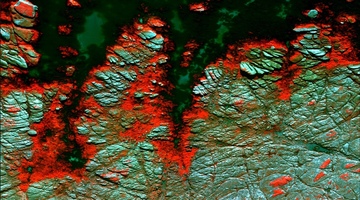A Sustainable Seas National Science Challenge project led by Dr Leigh Tait monitored kelp recovery after the 2016 Kaikōura earthquake.
NOTE: This video has no voice over or dialogue, only onscreen captions.
Captions
Kaikōura’s rocky coastline is known for its abundant marine life and kaimoana (seafood).
In November 2016 an earthquake lifted 130 km of coastline, by up to 6 m in places.
Kelp were among the worst affected marine species – with whole kelp forests dying out in some areas.
Kelp supports the ecosystem by providing food, shelter and protection for many species.
Kelp forests could take more than a decade to regrow, and their recovery is not guaranteed.
We wanted to monitor kelp recovery, but this is difficult over such a vast area so for the first time in NZ, we used drones equipped with specialised cameras to survey kelp.
We are mapping where kelp forests are recovering and where they are being displaced by other species.
Normal image
Multispectral image
Composite image
Computer-generated map
Our maps can help marine managers to identify which areas need protection to support kelp recovery.
This technology could be used nationwide to better manage NZ’s coastal ecosystems for future generations.
This research supports the vision of the Sustainable Seas National Science Challenge: Aotearoa New Zealand has healthy marine ecosystems providing value for every New Zealander.


